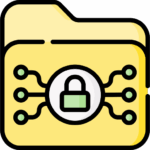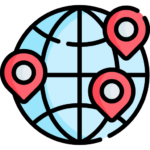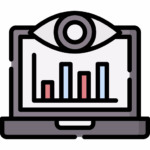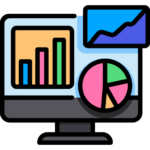Dark web monitoring
Stay ahead of cyber criminals with proactive dark web alerts
Speak to an expert today…
Stay ahead of cyber criminals with proactive dark web alerts
Speak to an expert today…
The dark web is where stolen business data, passwords, and confidential information are bought and sold. Without visibility into these hidden markets, you may not realise your company has been exposed until it’s too late. Dark web monitoring provides you with that visibility, alerting you to risks early so you can act quickly.
Below are the key ways it helps protect your business:

Compromised passwords and login details are a common entry point for hackers. Monitoring alerts you if employee or customer credentials appear on the dark web, so you can reset access before accounts are misused.

From financial information to intellectual property, stolen data is often sold in underground markets. Dark web monitoring helps you spot potential leaks early and protect your most valuable assets.

A data breach can disrupt operations, resulting in downtime, lost productivity, and increased recovery costs. Dark web monitoring provides early warnings, enabling you to keep your business running smoothly without unexpected interruptions.
The dark web is a part of the internet that is not indexed by search engines and can only be accessed with special software such as Tor. While some people use it for legitimate reasons, it is better known as a marketplace where criminals buy and sell stolen data, login details, and other illegal services.
Dark web monitoring is a security service that scans these hidden sites, forums, and marketplaces for information linked to your business. It looks for data such as email addresses, passwords, and financial details, and alerts you if they appear online.
This gives you the chance to act quickly, reduce the risk of cyberattacks, and protect sensitive information.
Dark web monitoring tools continuously scan hidden websites, marketplaces, and forums where stolen information is traded. They look for signs that your business data has been compromised and alert you immediately so you can take action.
The process is simple but powerful, typically working in the following ways:

Specialist tools search the dark web 24/7, monitoring sites where criminals post or sell stolen information.

Your company’s domains, email addresses, and other identifiers are tracked to detect if they appear online.

The moment your data is detected on the dark web, you’ll receive an alert straight away so you can secure accounts or update security settings.

Monitoring services often provide context on how the data is being used, helping you understand and manage the risk to your business.

With a dark web scan alert you can then take steps such as resetting credentials, blocking access, and tightening security to prevent further damage.
The dark web is a hidden marketplace where stolen data is shared, sold, and exploited. Dark web monitoring scans these channels and alerts you when your business information appears. This gives you the chance to act before criminals can use the data against you.
Here are the key risks it can uncover for your business:
| Type of data | Why it matters |
|---|---|
| Compromised email addresses | Hackers use these to launch phishing attacks or gain unauthorised access. |
| Leaked or stolen passwords | Password dumps allow criminals to break into company systems and accounts. |
| Breached credentials with reuse | Reused passwords put multiple accounts at risk once one login is exposed. |
| Stolen customer or employee records | Sensitive personal data can lead to fraud, legal issues, and reputational damage. |
| Credit card or payment data dumps | Exposed financial details are quickly sold and exploited for fraudulent activity. |
| Mentions of your company/domain name | Early warning that criminals are targeting your brand or systems for attack. |
| Confidential files or business data | Intellectual property or sensitive documents can be exploited or sold on the dark web. |
Not all dark web monitoring services offer the same level of protection. When selecting a provider, it’s important to look at the features that make the service effective and easy to use
Alongside monitoring, it’s worth considering your broader cybersecurity compliance obligations, as many industries must prove they are taking active steps to protect customer data.
Key factors to consider include:

The more marketplaces, forums, and hidden sites your provider monitors, the better your chances are of catching stolen data early.

Some providers only send monthly reports, which may be too late to act. Select a service that provides real-time alerts with clear details, enabling your team to respond quickly.

Look for a provider that integrates smoothly with your existing security tools, email platforms, or dashboards to avoid extra manual work.

A strong provider won’t just flag issues; they’ll also recommend practical steps to secure accounts and reduce risk.

Monitoring tools should be easy to navigate, featuring clear dashboards and reports that any team member can understand without specialised training.

Many services charge per user, which can get expensive for larger teams. Look for providers offering flat pricing that monitors your entire brand at one set cost.
Dark web monitoring services are built to protect your business from hidden online threats.
Many businesses also pair monitoring with cybersecurity software to act on alerts quickly, strengthen defences, and prevent further attacks.
Here are the core features you can expect:

Round-the-clock scanning of dark web forums, marketplaces, and data dump sites to detect exposed data as soon as it appears.

Some providers offer a first scan of your business domain to highlight any existing exposures before you commit to full monitoring.

Receive instant notifications when stolen credentials, sensitive data, or mentions of your company are detected.

Access monthly reports and dashboards that track exposures, breached sources, and stolen data over time.

Certain providers also allow you to monitor the personal email addresses of senior management, giving visibility into whether those accounts are exposed.
Dark web monitoring isn’t just for large corporations. Any business that handles sensitive data or relies on digital systems can benefit. The main groups include:

If your staff use email accounts, cloud services, or online platforms, stolen credentials give hackers a way into your business.

Sectors like finance, healthcare, legal, and retail are prime targets for criminals because they process large volumes of personal, financial, or confidential data.

High-level managers and decision-makers are often targeted directly. Monitoring their personal and business email accounts helps reduce the risk of spear-phishing and account takeovers.
Personal and business information usually ends up on the dark web after a data breach. When hackers break into websites, apps, or company systems, they often steal login details, email addresses, payment data, or other records. This is one of the many cybersecurity threats businesses face daily.
Once stolen, this data is:
This is why dark web monitoring is so valuable; it helps detect if your information is being circulated before criminals can exploit it.